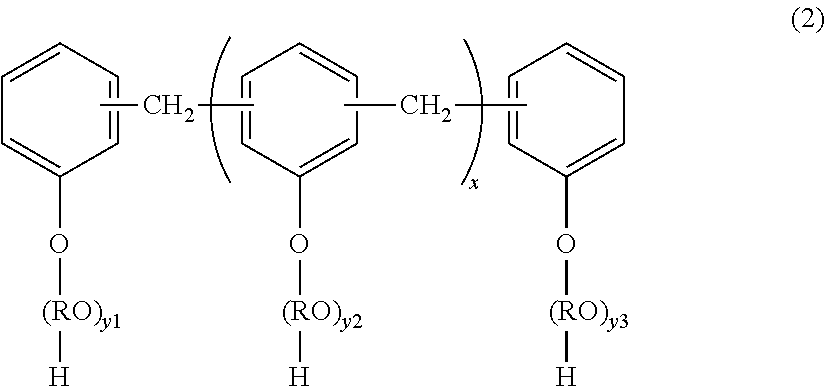Toner and two-component developer
a two-component developer and toner technology, applied in the field of toner and two-component developers, can solve the problems of insufficient fixability, density fluctuation may enlarge or fogging in a white portion, and the effect of initial charge quantity and alleviating effect on initial fogging cannot be obtained, so as to suppress the fluctuation of image density and fogging of a white portion, and low temperature fixability. , the effect of hot offset resistan
- Summary
- Abstract
- Description
- Claims
- Application Information
AI Technical Summary
Benefits of technology
Problems solved by technology
Method used
Image
Examples
production example a1
[0224]56.2 Parts by mass (0.158 mol: 97 mol % with respect to the total number of moles of polyhydric alcohols) of a polyoxypropylene(2.2)-2,2-bis(4-hydroxyphenyl)propane, 16.9 parts by mass (0.102 mol: 55 mol % with respect to the total number of moles of polyvalent carboxylic acids) of terephthalic acid, 1.1 parts by mass (0.0016 mol: 3 mol % with respect to the total number of moles of the polyhydric alcohols) of a novolac type phenol resin (adduct with 5 mol of ethylene oxide having a nucleus number of about 5), 6.4 parts by mass (0.044 mol: 25 mol % with respect to the total number of moles of the polyvalent carboxylic acids) of adipic acid, and 0.6 part by mass of titanium tetrabutoxide were loaded into a 4-liter four-necked flask made of a glass. Then, a temperature gauge, a stirring rod, a condenser, and a nitrogen-introducing tube were attached to the four-necked flask, and the four-necked flask was placed in a mantle heater. Next, an atmosphere in the flask was replaced wi...
production example a2
[0226]A polyester resin A2 was obtained by performing a reaction in the same manner as in Production Example A1 except that in the second reaction step, after the addition of trimellitic anhydride, the pressure in the flask was reduced to from 500 Pa or more to 2,000 Pa or less, and the reaction was performed at 160° C. for 5 hours. Table 2 shows the physical properties of the polyester resin A2.
PRODUCTION EXAMPLES A3 TO A6, A20, AND A21
[0227]Polyester resins A3 to A6, A20, and A21 were each obtained by performing a reaction in the same manner as in Production Example A1 except that the reaction time for the second reaction step was changed.
PRODUCTION EXAMPLES A7 TO A11, A22, AND A23
[0228]Polyester resins A7 to A11, A22, and A23 were each obtained by performing a reaction in the same manner as in Production Example A1 except that the polyhydric alcohol components used in the first reaction step and their molar ratios were changed as shown in Table 1. At that time, the number of part...
production examples a12
TO A17 AND A24 to A27
[0229]Polyester resins A12 to A17 and A24 to A27 were each obtained by performing a reaction in the same manner as in Production Example A1 except that the polyvalent carboxylic acid components used in the first reaction step and their molar ratios were changed as shown in Table 1. At that time, the number of parts by mass of each raw material was adjusted so that the total number of moles of the polyvalent carboxylic acids became equal to that of Production Example A1.
PUM
| Property | Measurement | Unit |
|---|---|---|
| softening point | aaaaa | aaaaa |
| softening point | aaaaa | aaaaa |
| temperature | aaaaa | aaaaa |
Abstract
Description
Claims
Application Information
 Login to View More
Login to View More - R&D
- Intellectual Property
- Life Sciences
- Materials
- Tech Scout
- Unparalleled Data Quality
- Higher Quality Content
- 60% Fewer Hallucinations
Browse by: Latest US Patents, China's latest patents, Technical Efficacy Thesaurus, Application Domain, Technology Topic, Popular Technical Reports.
© 2025 PatSnap. All rights reserved.Legal|Privacy policy|Modern Slavery Act Transparency Statement|Sitemap|About US| Contact US: help@patsnap.com



